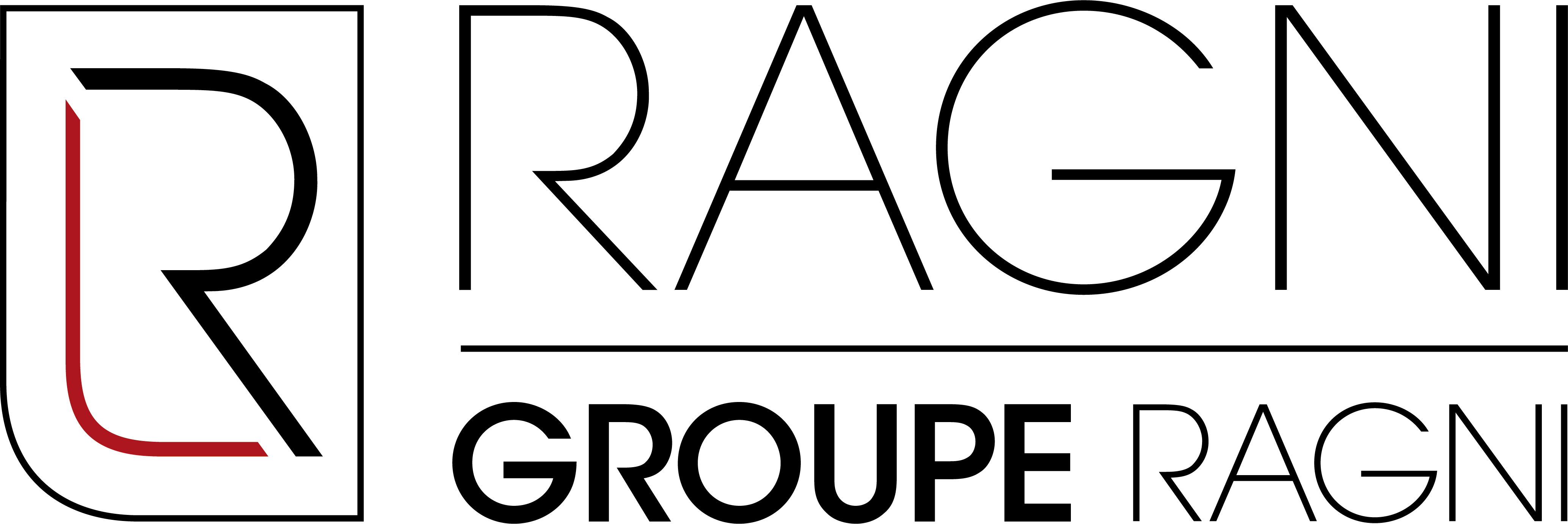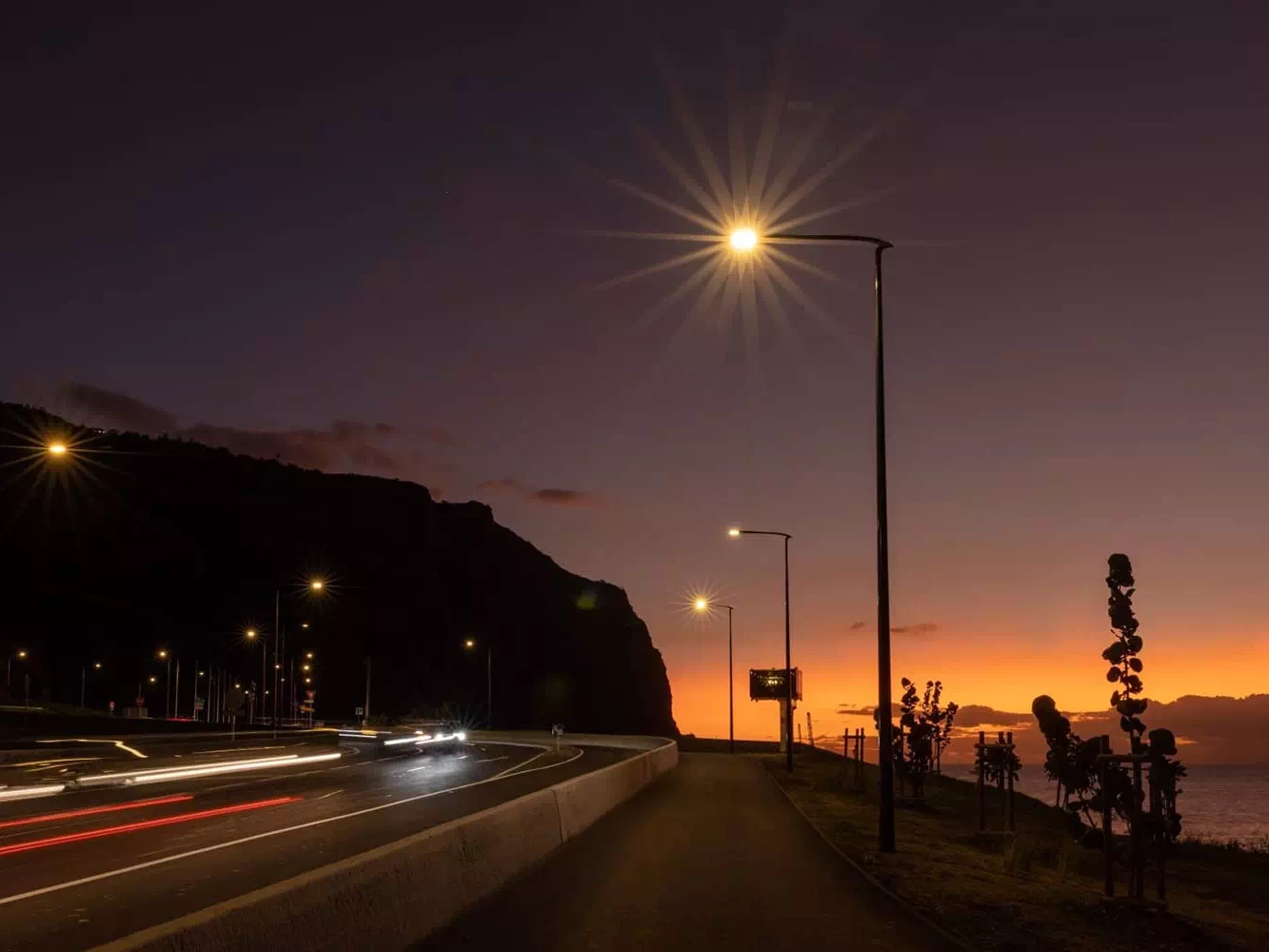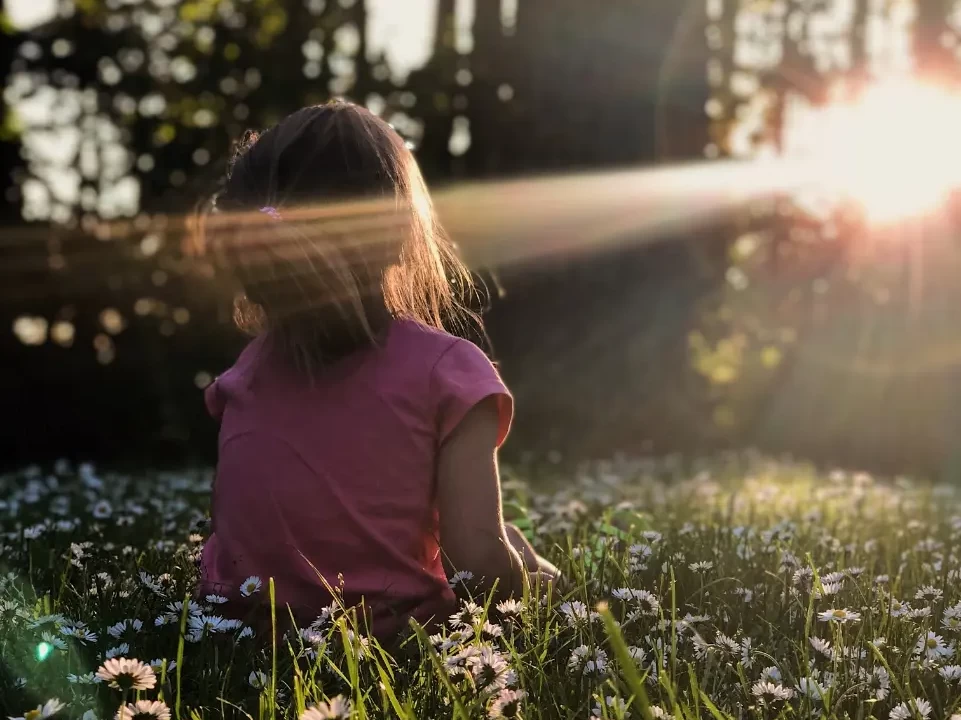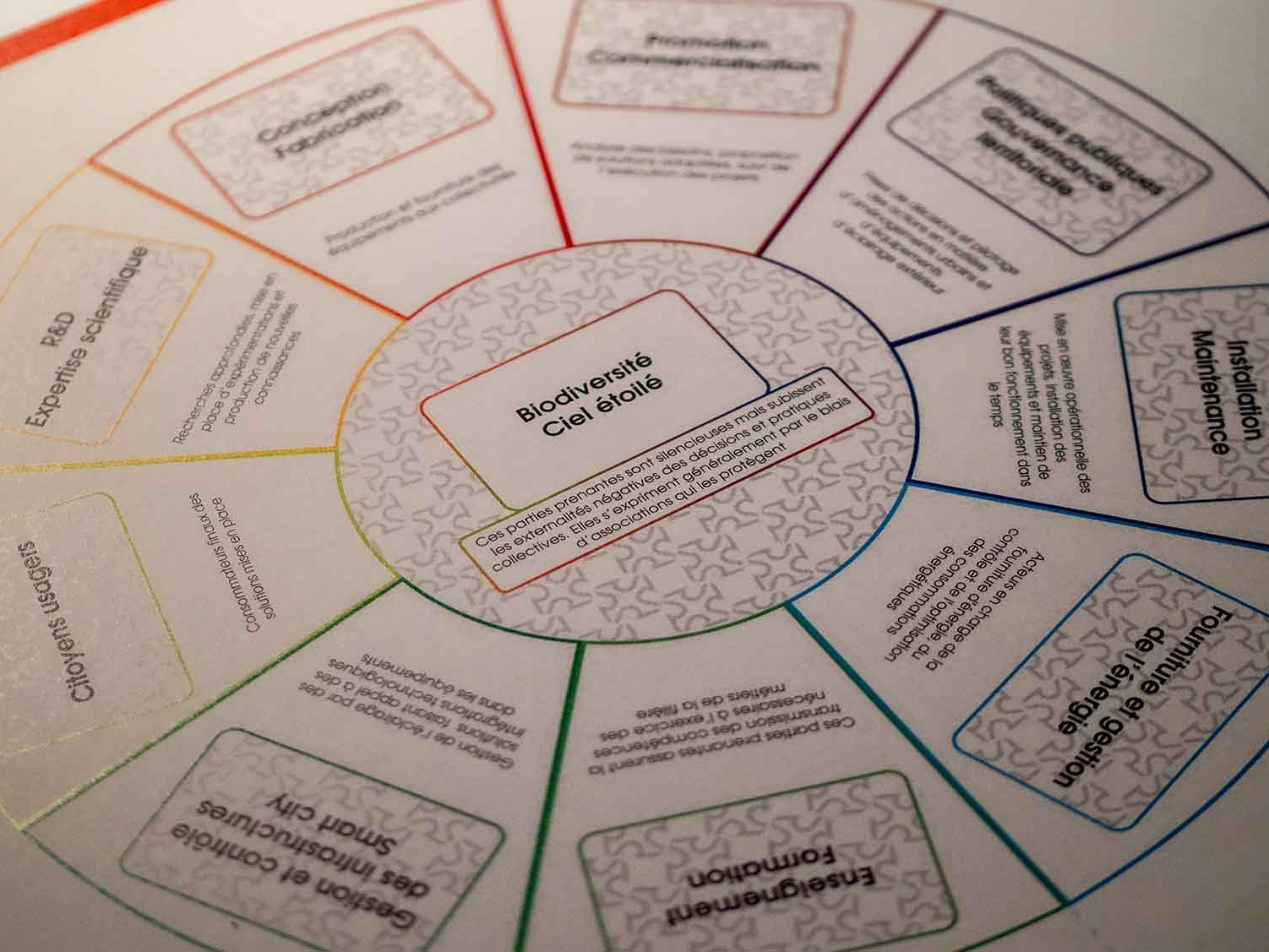As an employer, manufacturer, and lighting designer, our environmental responsibility is linked to a number of issues.
Our 2nd statutory commitment covers both our operations and our commercial offering:
Make environmental issues the driving force behind our activities, and develop new solutions
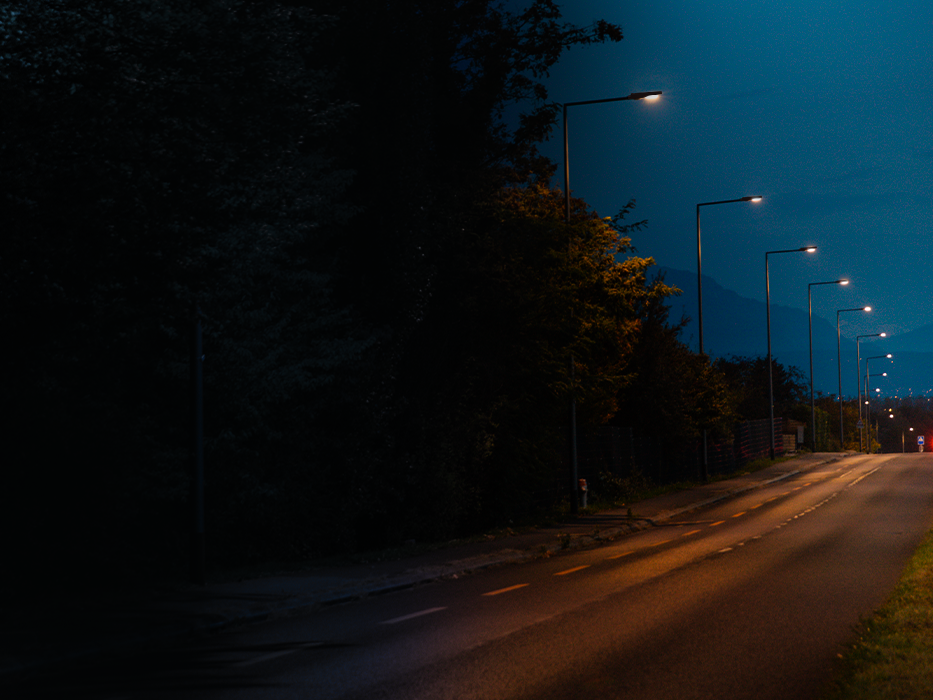
4 operational commitments meet this statutory commitment:
1
Structure and deploy an eco-design strategy
Target 2.1: Do not exceed 11.5 kgCO2eq for 80% of new lighting fixtures designed (for the business unit as a whole)
Target 2.2: Do not exceed 15 kgCO2eq on average for 80% of products sold during the year (for the business unit as a whole)
Target 2.3: Lead 1 development project including at least 50% of luminaire weight in recycled material
2
Optimize operational processes to reduce emissions and consumption
Target 2.4: Limit our share of non-hazardous industrial waste (NHIW) to 10% of total waste weight by the end of 2026
Target 2.5: Have a fleet of logistics vehicles that is 60% electric.
3
Encourage sustainable transport and reduce the impact of travel
Target 2.6: Increase the proportion of employees using public transport and reach 15% of employees using an alternative mode of transport to the private car.rnatifs à la voiture individuelle
4
Developing and integrating eco-innovative products and services
Target 2.7: Equip 50 new communities with an effectively active SEVⓔ solution (France and international combined)
Target 2.8: Participate in at least 1 research project
LET’S REVIEW OUR ENVIRONMENTAL IMPACT
Fauna and flora disturbance: habitat fragmentation, ecosystem imbalances, disruption of circadian rhythms, etc.
Greenhouse gas emissions and pollution: extraction, transport, manufacturing, end-of-life, the entire product life cycle has an impact on the environment.
Light pollution: the starry sky is a common asset for humanity. Artificial lighting produces a luminous halo that makes stargazing increasingly difficult.
A COMPANY COMMITTED TO NATURE

In 2023, RAGNI joined the “Entreprises engagées pour la nature” initiative, a program run by the French government to integrate biodiversity protection into the strategies of companies and local authorities.
See our biodiversity strategy here.
LIFE-CYCLE ANALYSES
Our design teams are trained in the life-cycle analysis of our luminaires, which we carry out in compliance with the international PEP Ecopassport® standard. The PEP (Product Environmental Profile) is an environmental declaration compliant with ISO 14025, which enables the various environmental impacts resulting from an LCA (Life-Cycle Analysis) to be communicated in compliance with ISO 14040 and ISO 14044. The LCA is an essential tool to help our customers choose the lowest-impact offers.
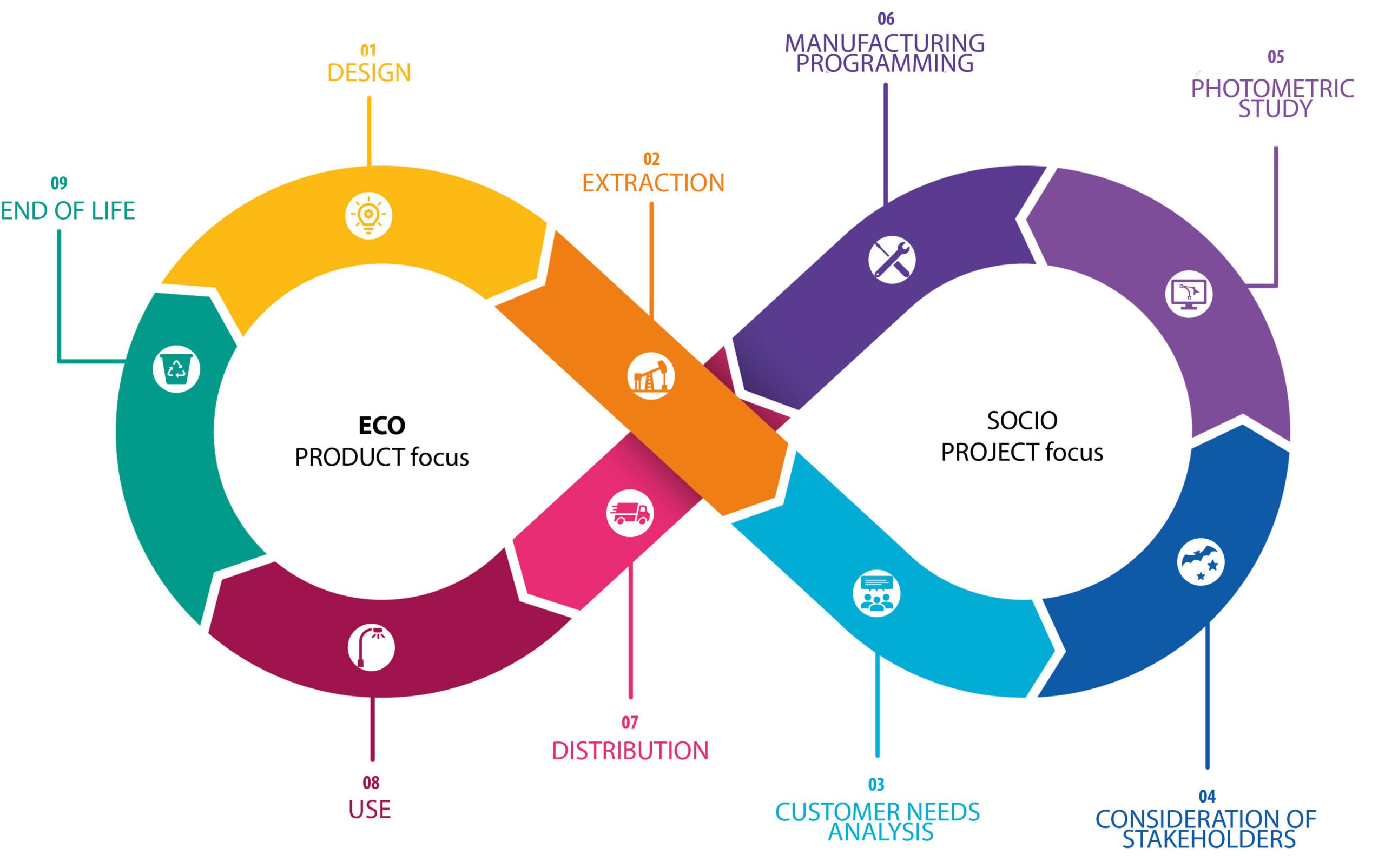
ALSO SEE
Newsletter
News, study cases, articles, key numbers…
And much more to discover, every two months, by signing up to our Newsletter!
